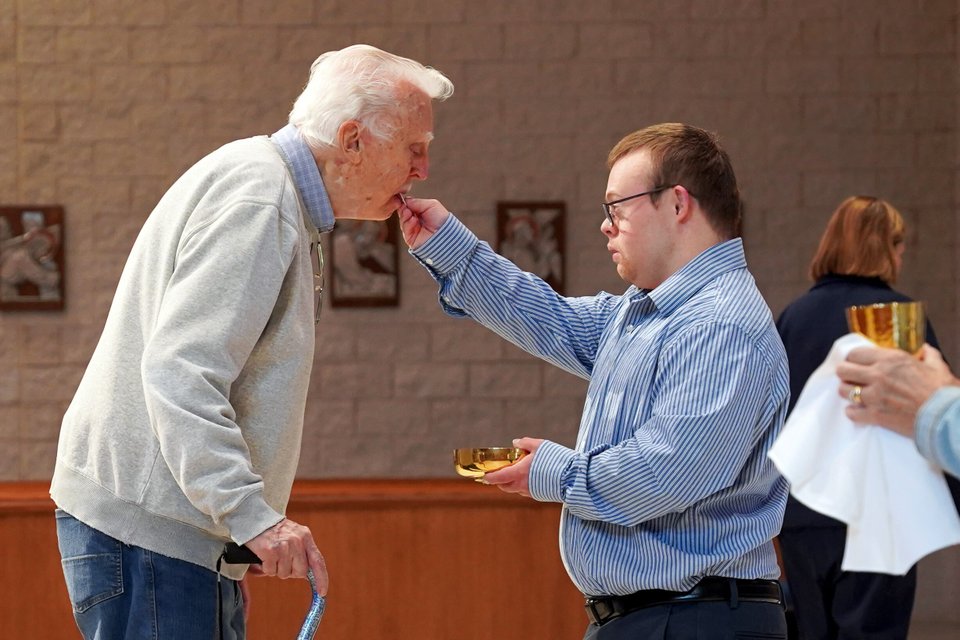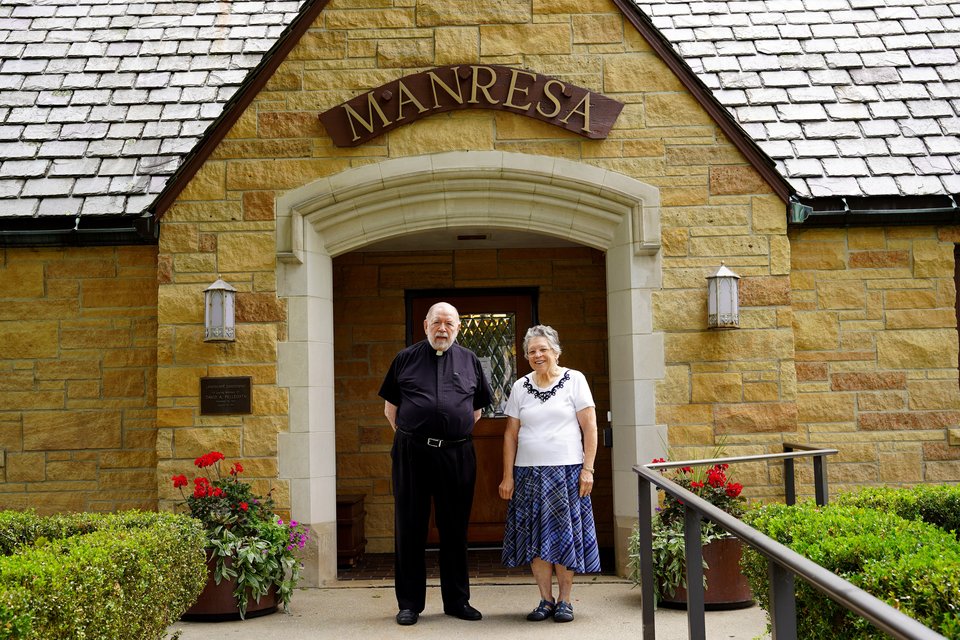Deacon Bob Tremmel, a research chemist by trade, began studying purported image of Jesus in 1956 and has not stopped since
BROWNSTOWN TOWNSHIP — For nearly 66 years, Deacon Bob Tremmel has been devoted to the study of the Shroud of Turin, a length of cloth with the negative image of a crucified man that is purported to be the burial cloth of Jesus Christ.
Now 82 years old, Deacon Tremmel’s fascination began as a 16-year-old in 1956, when he read the book, "A Doctor at Calvary: The Passion of Our Lord Jesus Christ as Described by a Surgeon," by the French physician Pierre Barbet.
Deacon Tremmel, who went on to become a research chemist for 55 years before he retired, was already fascinated with science in high school, and it was the compelling scientific perspective and research results on the Shroud of Turin that hooked him and have held his fascination ever since.
“(Barbet) talked about how a crucified victim died, which is by suffocation, not by bleeding or shock or anything like that,” Deacon Tremmel told Detroit Catholic. “He did experiments showing how the nails could not have been in the palms but in the wrist, which is pictured in the shroud. That affects the actual anatomy of the hand when the nail is put through the wrist.”
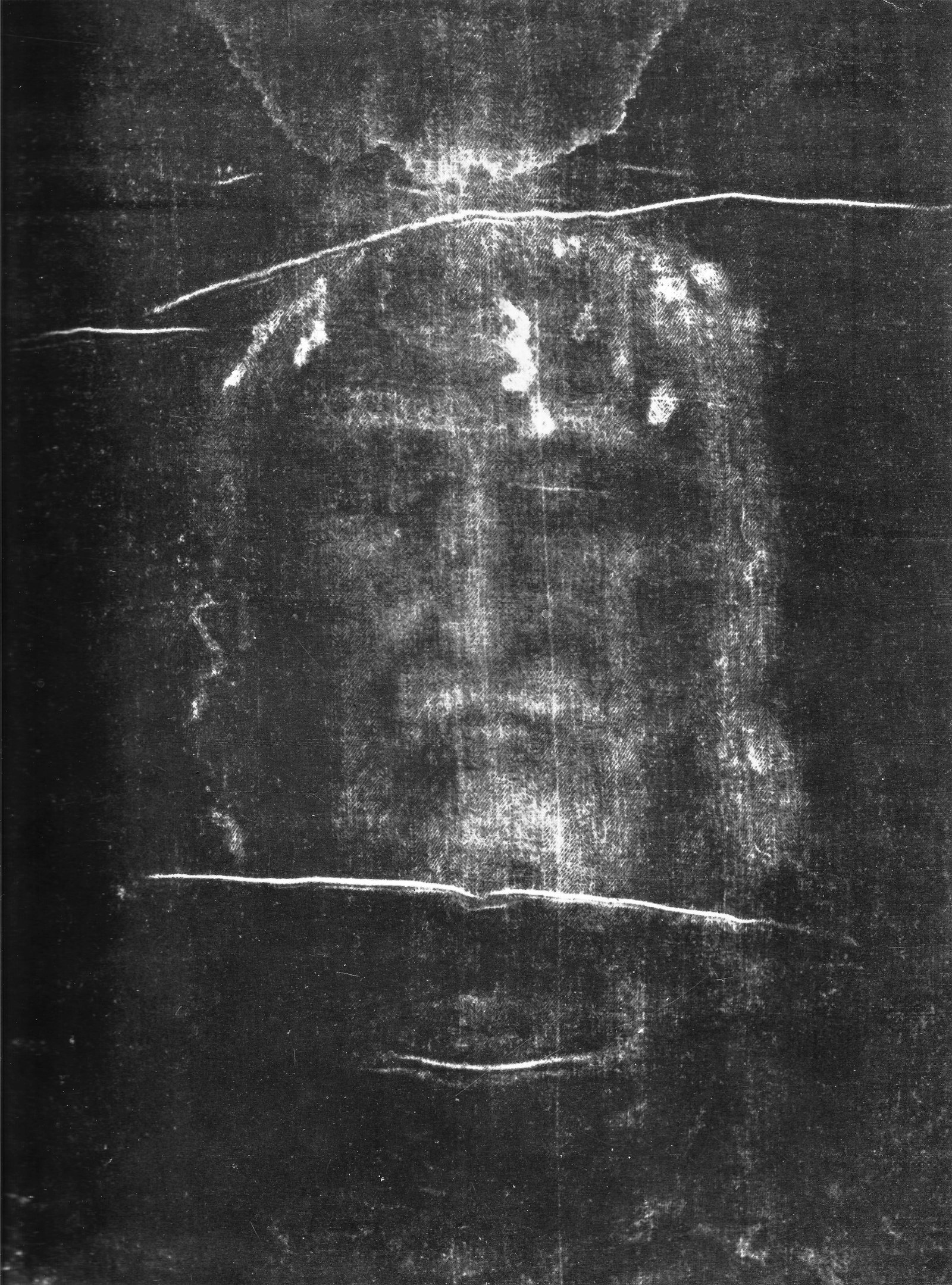
It was this evidence and more that led Deacon Tremmel to believe that the shroud is the true burial cloth of Christ.
The shroud has been the subject of fascination and controversy for centuries, as religious scholars, scientists and historians have debated its authenticity. Tests have been done on the cloth, and it has been closely studied, perhaps most notably in 1898, when the first photo of the shroud was taken.
When the photo was first taken, negatives were developed and then transferred to photographic paper to get the true image, Deacon Tremmel explained.
"In the case of the shroud, the image itself is a negative, which means all lights and darks are reversed as well as the orientation of the image," Deacon Tremmel wrote in an email to Detroit Catholic. "So, that means that the film negative is actually a positive image which now shows what the man of the Shroud (Jesus) really looked like. This event marked the beginning of the scientific investigation of the Shroud since it begged the question of how a forger could create a perfect photographic negative at least 500 years before the invention of the camera."
The shroud was again studied in 1978 by the Shroud of Turin Research Project, a multidisciplinary scientific examination of the cloth. In 1988, controversial carbon dating was done on the shroud, which led some scientists to believe that the shroud did not date back to the time of Christ, but rather to somewhere between 1260-1390 A.D.
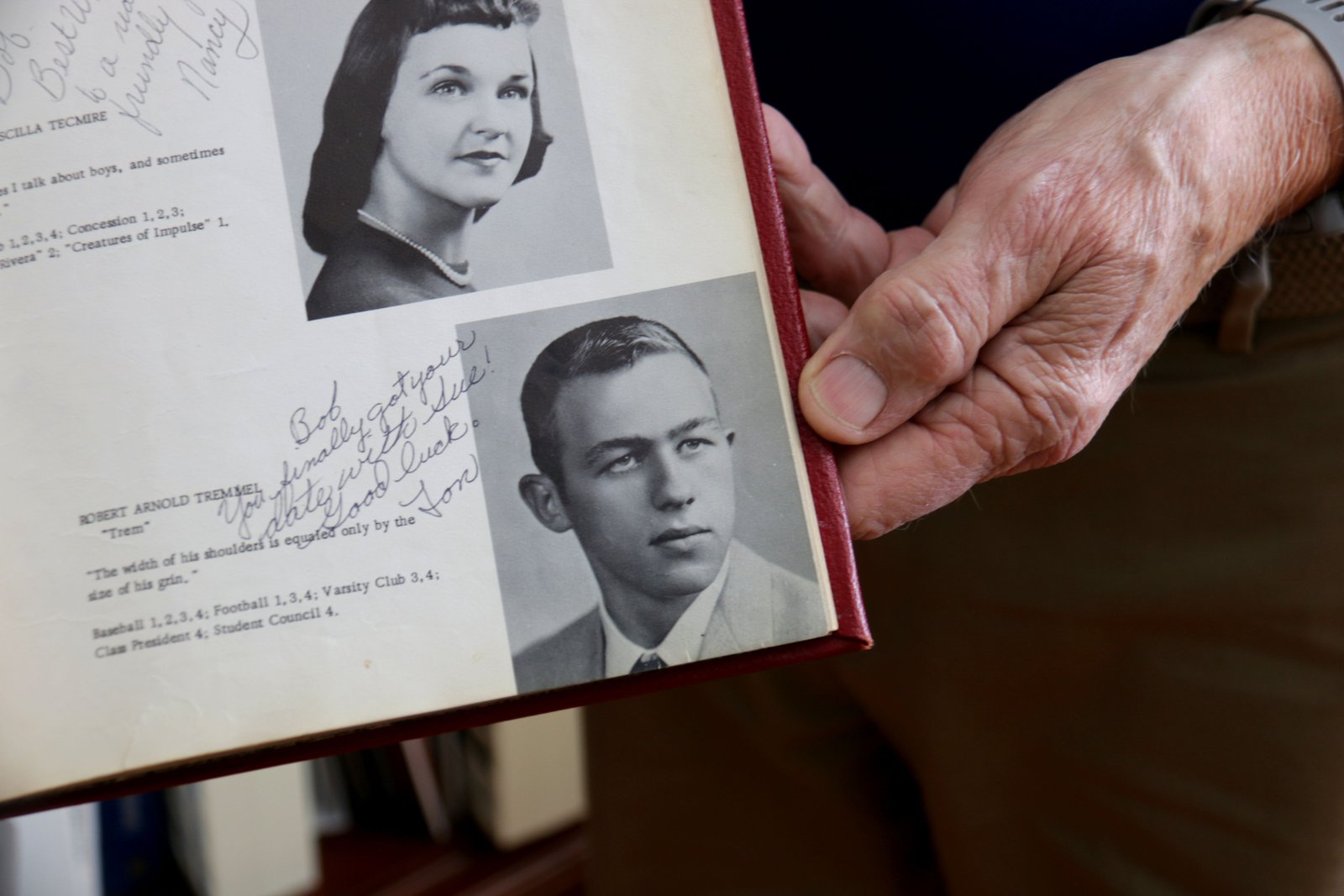
Millions of man-hours have been spent studying the shroud, Deacon Tremmel explained, and the majority of the resulting evidence has pointed to its authenticity.
“The only real negative of it has been the dating of the shroud by carbon dating, which is a normally very reliable way to date an old artifact, but in this case, it was done very poorly,” Deacon Tremmel said. “(The 1988 research study) didn’t follow the proper protocols; the sample was taken from the edge of the shroud. It was a repaired sample, so it wasn’t representative of the cloth.”
The positives have all served to convince Deacon Tremmel of its authenticity.
“First of all, it is an anatomically perfect depiction of a crucified human being. Secondly, the blood is real blood, and the blood type is type AB positive, which is not a common type of blood but very common in the Middle East, and that puts the blood of the man in the shroud in the Middle East, where Jesus lived,” Deacon Tremmel explained.
Additionally, the bloodstains are accurate to the wounds of someone who has been scourged, Deacon Tremmel said. Studies of the cloth have also shown images of coins over the eyes of the man. The one over his right eye is a coin that was minted by Pontius Pilate between 29-31 A.D.
Perhaps the most compelling detail is that the image is three-dimensional, Deacon Tremmel said.

“A painting or a photograph is two dimensional,” Deacon Tremmel said. “The shroud appears to be two dimensional, but it actually has what they call three-dimensional encoding in the imaging, so that means the shroud covered a human corpse or it covered a statue of a human being and encoded three-dimensional data into the shroud.”
The shroud also contains pollens and a limestone imprint — Deacon Tremmel described the spectra of the limestone like a fingerprint, one that you could only get from one location — which places the shroud's origins in Jerusalem.
Although he has never had the opportunity to see it in person, Deacon Tremmel has read practically every book on the shroud. He has personally corresponded with members of the 1978 research team, and a friend of his attended one of the few public exhibits of the shroud in the 1970s and brought back an image of it and described it to Deacon Tremmel in detail.
If he were to see it in person, Deacon Tremmel said, he would need to stand farther than 6 feet away, because any closer, you can't see the image.
“It is very faint, and you have to be at a distance to see it, which would contradict a forgery or a painting,” Deacon Tremmel said. He added there has never been any paint found on the shroud, and the image is very superficial, only on the topmost parts of the fibers.
“It’s dehydrated cellulose, and we know that chemically that had to be caused by some form of mild heat, which had to come from the body, which is another convincing thing for me about its authenticity, and it had to come from a corpse,” Deacon Tremmel added.
Deacon Tremmel was ordained a permanent deacon in 1980 and has served at a number of parishes, including Our Lady of the Woods in Woodhaven, Sacred Heart in Grosse Ile, and St. Roch in Flat Rock. He remains a parishioner at Sacred Heart.
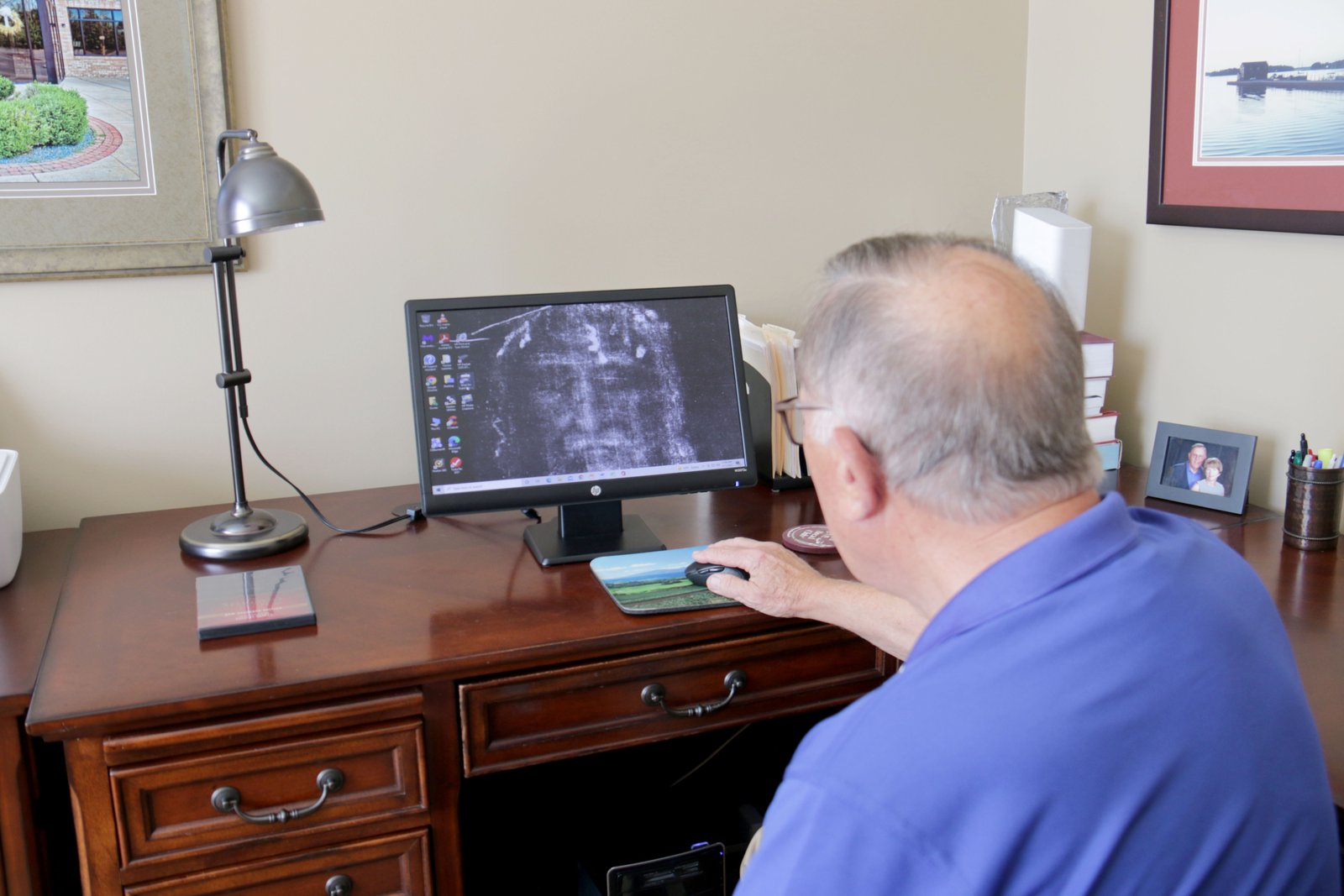
Although retired, Deacon Tremmel has been giving presentations on the shroud since the 1980s. He has spoken throughout parishes in Michigan, in addition to some in Ohio, Indiana, and recently in Pensacola, Fla. He has also presented at Protestant churches on Grosse Ile.
At the end of his presentations, he always shows a digital rendering of the face of Jesus, based on the Shroud of Turin. This is the part of the presentation that always sticks with people, Deacon Tremmel said.
“I say that it is God’s love letter to mankind, and it is also the fifth Gospel. It’s His love letter because you see the extraordinary suffering that Jesus suffered during the crucifixion, and it is very evident and very graphic on the shroud, and that is because of his love for us,” Deacon Tremmel explained. “It tells us how much God loves us, which I think intensifies one's faith.
“It is the fifth Gospel in the sense that the real Gospel is the suffering, death and resurrection of Jesus — that is the heart of the Gospel, that is all Paul preached was Christ crucified," Deacon Tremmel added. "(The shroud) is a Gospel in itself, but you can see it. It is a Gospel that is not read; it is a Gospel that can be seen and, again, that supports our faith. I like to present it because I think it is a way to evangelize; I know of several people who have come back to the Church because of my presentations who have been away for a long, long time.”
Deacon Tremmel said he's interested in giving more presentations on the shroud, a lifelong fascination for him. Because he is a scientist, the first part of his presentation is all about evidence and facts, he said. In the second part, he looks at how the shroud can impact one's faith.
“Faith is a gift from God, so whether (the shroud) is real or not real is not going to change my faith very much, but I think it supports my faith,” Deacon Tremmel said. “I think science can help to support our faith by revealing something like this … the only explanation for the formation of that image on that cloth is miraculous.”
Book a presentation
To have Deacon Bob Tremmel speak to your parish about the Shroud of Turin, email him at rtremmel@comcast.net.
Copy Permalink
Personal witness Prayer and spirituality



